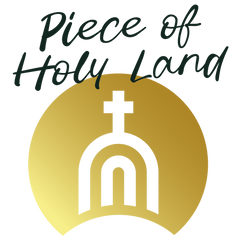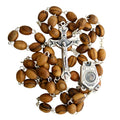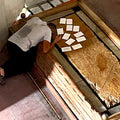The Profound Devotion to the Most Sacred Heart of Jesus

Unveiling the Rich History, Symbolism, and Enduring Significance of the Most Sacred Heart of Jesus
Introduction: Embracing the Heart of Divine Love
The devotion to the Most Sacred Heart of Jesus stands as a central pillar in Christian spirituality, symbolizing the boundless and compassionate love that Christ holds for humanity. This sacred symbol serves as a profound reminder of Jesus' sacrificial love, inviting the faithful to reflect deeply on His mercy and to foster a personal connection with the divine. Through the veneration of the Sacred Heart, believers are called to immerse themselves in the mysteries of Christ's love, finding solace and inspiration in His enduring compassion.

Historical Evolution of the Sacred Heart Devotion
The roots of the Sacred Heart devotion can be traced back to the early centuries of Christianity, where the heart of Jesus was revered as a symbol of His divine love. Early Church Fathers, such as St. Justin Martyr in the 2nd century and Pope Gregory the Great in the 7th century, emphasized the significance of Christ's pierced side as a fountain of sacramental grace, highlighting the profound love emanating from His heart.
In the medieval period, the devotion gained further prominence through the contemplative practices of mystics like St. Bernard of Clairvaux, who meditated on the wounds of Christ, viewing them as windows into His divine love. This period also saw the emergence of prayers and hymns dedicated to the Sacred Heart, reflecting a growing desire among the faithful to unite their hearts with that of Jesus.
The 17th century marked a pivotal moment in the formalization of the Sacred Heart devotion, primarily through the revelations received by St. Margaret Mary Alacoque, a French Visitation nun. Between 1673 and 1675, she experienced a series of visions in which Jesus disclosed His deep love for humanity and expressed a desire for a feast dedicated to His Sacred Heart. He revealed to her the image of His heart, aflame with love, encircled by a crown of thorns, and surmounted by a cross, a depiction that has since become synonymous with the Sacred Heart devotion.
These revelations emphasized themes of reparation, mercy, and the immense love of Christ, urging the faithful to offer acts of penance and to receive Holy Communion frequently, especially on the first Friday of each month. St. Margaret Mary's confessor, St. Claude de la Colombière, played a crucial role in promoting this devotion, helping to disseminate its practices and spiritual benefits throughout France and beyond.
Over time, the Sacred Heart devotion received official recognition from the Catholic Church. In 1765, Pope Clement XIII approved the Feast of the Sacred Heart for specific religious communities, and by 1856, Pope Pius IX extended the feast to the universal Church, underscoring its significance in Catholic worship. Subsequent popes, including Leo XIII and Pius XII, further endorsed the devotion, highlighting its theological depth and spiritual richness.

Symbolism of the Sacred Heart: A Deep Theological Reflection
The imagery associated with the Sacred Heart is rich in symbolism, each element offering profound insights into the nature of Christ's love and the mysteries of redemption.
-
The Heart: At the center is the heart itself, representing the core of Jesus' being and His infinite love for humanity. It is a universal symbol of love, and in this context, it signifies the divine love that led Him to sacrifice Himself for the salvation of souls.
-
Flames: Emanating from the heart are flames, illustrating the fervent and transformative love of Christ. This burning love signifies His desire to purify and sanctify souls, drawing them into deeper communion with Him.
-
Crown of Thorns: Encircling the heart is a crown of thorns, reminiscent of the suffering and humiliation Jesus endured during His Passion. This element underscores the pain inflicted by human sin and ingratitude, yet also highlights His willingness to embrace suffering out of love for mankind.
-
Cross: Atop the heart stands a cross, symbolizing the instrument of salvation and the ultimate act of love through Christ's crucifixion. It serves as a reminder of the price of redemption and the call to take up one's cross in following Him.
-
Wound and Blood Drops: The heart often bears a visible wound, reflecting the piercing by the soldier's lance, from which blood and water flowed. This signifies the sacraments of the Eucharist and Baptism, through which the Church is continually nourished and cleansed.
Collectively, these symbols invite the faithful to contemplate the depths of Christ's love, encouraging a response of gratitude, repentance, and a commitment to embodying His love in daily life.
Theological Foundations and Scriptural Roots
The devotion to the Sacred Heart is deeply rooted in Scripture and theological reflection. In the Gospels, Jesus invites the weary to find rest in Him, highlighting His gentle and humble heart (Matthew 11:28-30). This passage reveals the compassionate nature of Christ, offering solace to those burdened by life's trials.
The piercing of Jesus' side, as recorded in the Gospel of John (John 19:34), where blood and water flowed forth, has been interpreted by Church Fathers as a profound symbol of the birth of the Church and the outpouring of sacramental grace. St. Augustine eloquently described this event as the opening of the door of life, from which the sacraments flow, allowing believers to draw near to the heart of Christ.
The Sacred Heart and the Power of the Rosary
One of the most profound ways to deepen one's devotion to the Sacred Heart is through the use of the Holy Rosary. The repetition of prayers in the Rosary mirrors the heartbeat of Christ, drawing the faithful into a meditative state where they can reflect upon His divine love and mercy. Throughout history, countless saints and mystics have emphasized the power of the Rosary in strengthening one's connection to the Sacred Heart.
The Rosary serves as a bridge between the heart of the believer and the heart of Jesus. In praying the Rosary, particularly the Sorrowful Mysteries, one contemplates the Passion of Christ, His immense suffering, and the infinite love that led Him to sacrifice Himself for humanity. This act of meditation aligns perfectly with the devotion to the Sacred Heart, which calls the faithful to reflect on Christ’s boundless compassion and the suffering He endured out of love for humankind.
A particularly meaningful devotional item for this practice is the Immaculate Heart Rhinestone Rosary, a stunning representation of faith that beautifully complements devotion to the Sacred Heart. This rosary, adorned with intricate rhinestones, symbolizes the unity between the Sacred Heart of Jesus and the Immaculate Heart of Mary, reminding the faithful of their combined intercession and love for humanity.
Final Reflection: Embracing the Love of the Sacred Heart
The devotion to the Most Sacred Heart of Jesus is an invitation to experience the fullness of divine love. It is a call to trust in Christ’s infinite mercy, to seek refuge in His Heart, and to spread His love to the world. Whether through prayer, Eucharistic Adoration, or the veneration of Sacred Heart images, this devotion remains a profound source of strength and grace for millions.
As we meditate on the Sacred Heart, let us remember Christ’s words: "Come to me, all you who are weary and burdened, and I will give you rest" (Matthew 11:28). May His Heart continue to draw us closer to Him, filling our souls with His eternal peace and love.
SHARE:






















